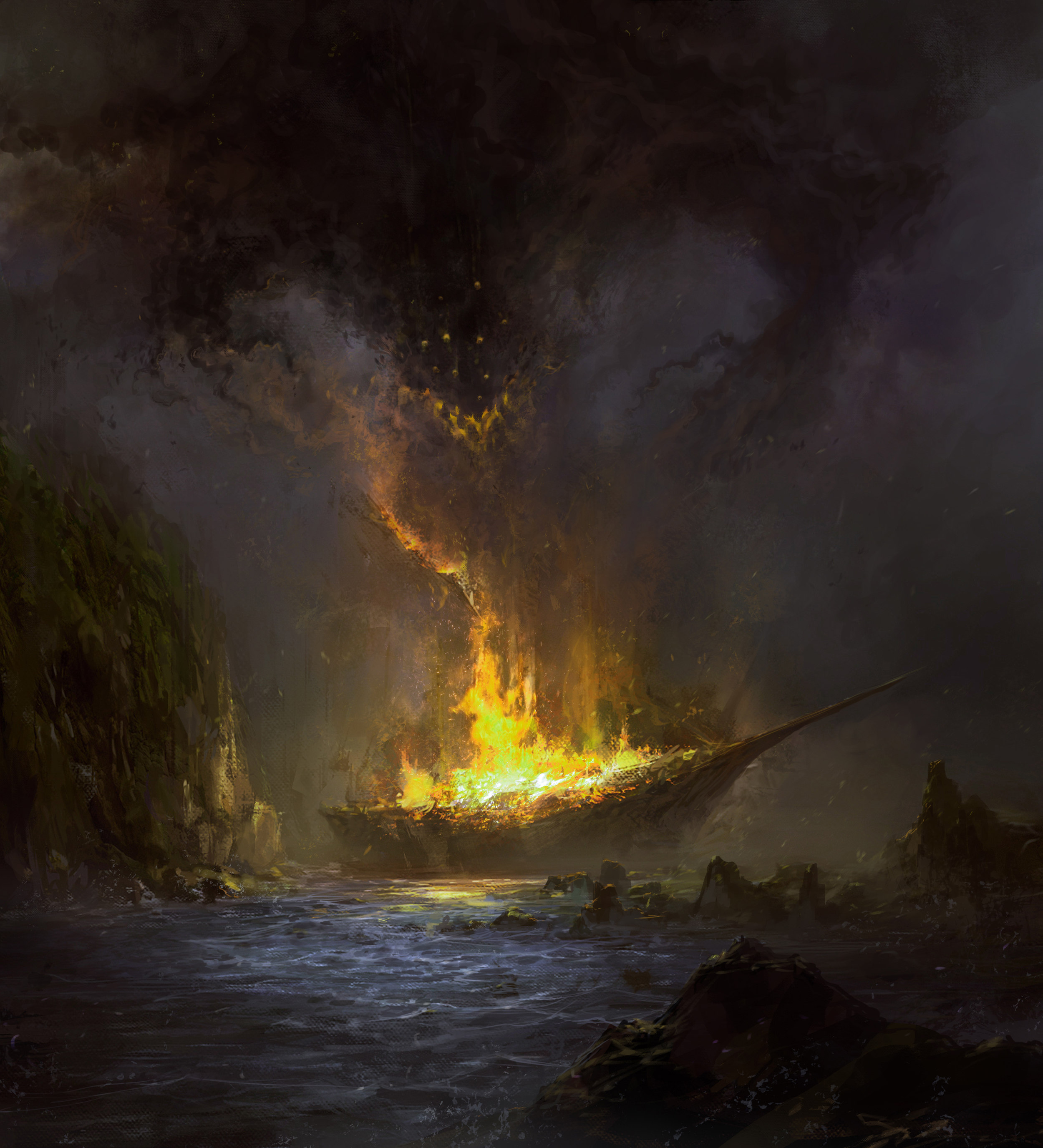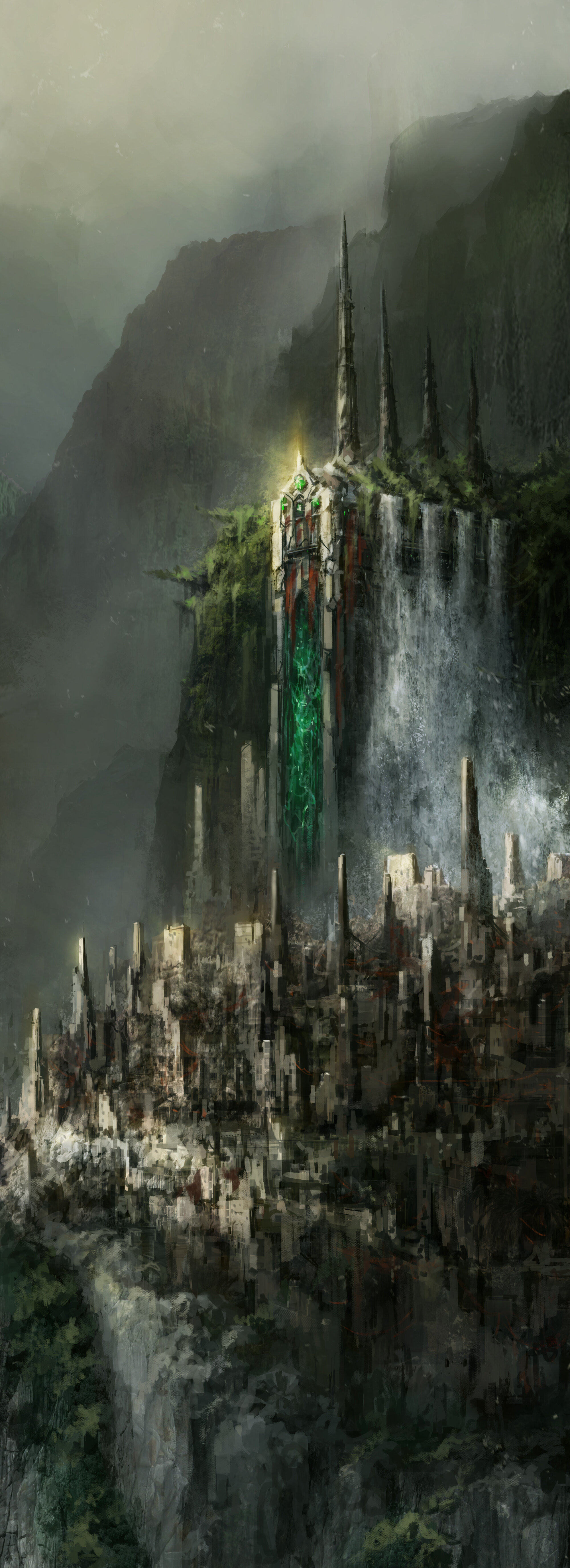Though Syrikhal was among the first regions settled by humans, its inland reaches are still buried in jungle, where the straggling remains of pre-human abhorrence linger undiscovered. The dragonborn clans that populate the tropical forests descend from the Empire of Daragoch, which crossed the Black Ocean and claimed present-day Syrikhal before humans even set foot here.
Aberrant threats lurk hungrily in the shadows of the jungle, held back by the Humenhi Wayfarers—dedicated monks who have sworn to keep planar threats at bay. It’s never been clear which came to Syrikhal first, the monks or the Darkplane aberrations, but their desperate dance over the fate of the mortal world has lasted centuries. In this region the need for a disciplined mind and a strong hand is real.
The ascetic religion of the Humenhi Wayfarers is a binding cultural force among the humans who live in Syrikhal. They symbolize discipline, enlightenment, restraint, and mutual trust. Whether these precepts can withstand the abominable presence of the Darkplane is yet to be seen.
TRENTSMUND
From humble beginnings, this region rose to become seat of the world-choking empire that is its namesake. Trenstmund’s is a history of unlikely greatness—and a warning of the perditious corruption such greatness can bring. To the Trentsmunders, machinery is a symbol of life. Automation and steam power are now the fuel that runs the engine of its economy.
The true heroes of Trentsmund are seldom recognized because they Fight invisible threats that would chill the blood of prosaic folk. Some investigate hauntings and paranormal threats, others walk in the circles of the demimonde—the underground community of criminals, hedonists, and libertines. Common to such company is an interest in the dark arts, a pursuit too preposterous (or perhaps too dangerous) for prudent minds.
Your investigations in Trentsmund might lead through the narrow cobblestone streets of a factory district, along the dotted path of streetlamps that strain to penetrate the coal-fire smoke, or into the parlor of a psychic cult. Behind any door may wait horrors in human clothing.
WELLUSK
Its proud cities now in ashes, Wellusk is an expansive ruin inhabited mainly by the bloodthirsty quasi-vampires that have succumbed to the vorruc blight. These packs of ravenous hunters band together, often mimicking the uninfected in pursuit of living flesh and blood to consume. Humans who have survived the desolation find they must stay out of sight, scavenge what sanitary food they can, and cling to the faint hope that they will one day escape or rebuild.
Some say the effort to cleanse the region has already begun, as the widowed and orphaned take shelter in ruined sanctuaries, forming new bonds in new communities. Old grudges have been done away. Now there are only the living, the dead, and those in between. To the homeless and forsworn, more than ever before, the true enemy is clear: the vampire legions of Perrith Gorr.
But that enemy hasn’t shown its face in five years. Since the vampire host withdrew beneath its cerement, speculation runs wild among the surivors in Wellusk. Whatever the reason, it’s clear that the god-emperor of Perrith Gorr never intended to rule the ruin his legions left behind. He was content to unmake it, and leave the rest of Vinramar to ponder what terrible wonders will follow.
Parties adventuring (or surviving) in Wellusk tend to have one of two goals: adapt or escape. Those who refuse to abandon their home find nesting to be a difficult proposition, but if they can obtain allies, supplies, and a defensible shelter, they have a chance. Many can last for some time in such circumstances. Escape, on the other hand, sounds far easier than it is. With ships shunning the region and nearby settlements all flooded with refugees, survivors need every ounce of cunning and determination to put this devastation in their past.



















As the GM, your role is to ensure the game cycles smoothly from phase to phase while engaging and rewarding players. The diagram below maps how this gameplay cycle fits the adventure phases together into a looping pattern of discovery, risk, and rewards. Following the guidance in this article can make the difference between an engaging sandbox and an aimless slog.